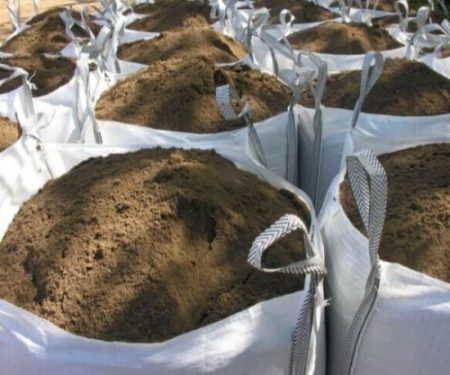- Turf
- Artificial
- Soil
- Timber
- Composite Decking
- Paving & Stone
Get In Touch With Our Experts Today!
Give us a Call! - Seed & Fertiliser
- Dressing
- Bark

February 02, 2023
It can be easy to overlook your garden during the winter months. Many of us are spending more time indoors, but that doesn’t mean our outdoor spaces have to suffer. Winter is the perfect time to give your lawn extra love and attention by laying down quality, nutrient-rich topsoil. So bundle up, put on those gardening gloves, and give your lawn a much-needed boost, ready for the warmer months ahead.
Topsoil is a type of soil made up of organic matter, minerals, and nutrients that are essential for healthy plant growth. It can help replenish the soil in your garden with vital nutrients and improve its drainage capabilities.
Applying topsoil during winter can be beneficial to your lawn in many ways. For starters, it adds essential nutrients and minerals back into the soil that has been depleted over time by natural weathering processes. This helps promote strong root growth for your plants and ensures they grow optimally even when temperatures are low. Additionally, laying down topsoil also improves the drainage capabilities of the soil, which can help prevent waterlogging during periods of heavy rainfall or snowfall. Topsoil can also minimise erosion caused by wind or rain, helping keep your garden looking neat and tidy all year round.
Preparing the ground before applying topsoil is essential in ensuring your lawn will benefit from its use. Before you begin, it’s important to ensure that the area is free of weeds and debris, as these can prevent sunlight and nutrients from getting to the turf. It’s also a good idea to loosen up hard or compacted soil so nutrients can penetrate more easily. Consider aerating the soil with a garden fork or tiller if necessary.
Improving the drainage prior to adding topsoil is essential to ensure that the new layer of soil can absorb and retain the maximum amount of water. The best way to do this is by aerating the ground with a garden fork, which will help break up any compacted or hard areas, allowing water to penetrate more easily. We recommend doing this every 10cm throughout your lawn to ensure adequate drainage and full coverage. Once this is done, it’s time to start adding topsoil.
Some people choose to mix sand in with their topsoil for added drainage and aeration. However, we recommend using topsoil with high sand content, as this will provide your lawn with better drainage without the need for extra additives.
Adding topsoil is simple and can be done with a shovel or wheelbarrow. Spread a 3-4cm layer of topsoil evenly over the area, being sure to get right into any corners or hard-to-reach places. You can use a rake or shovel to do this and make sure it’s distributed as evenly as possible. Topsoil should not be left in large clumps, as this can interfere with water absorption and cause a build-up of unwanted weeds, so only a thin layer is recommended.
Once you have applied the topsoil, be sure to water it well. This will help it settle into areas that may need more coverage and allow for better nutrient absorption from the soil. You may also want to fertilise your lawn for a further boost of nutrients. Be sure to use an autumn/winter fertiliser that contains slow-release nutrients so that your lawn will benefit from the topsoil long after winter has passed.
Taking the time to topsoil your lawn during winter may seem like a lot of hard work, but you’ll be reaping the rewards come spring and summer. Not only will your plants benefit from improved drainage and nutrient-rich soil, but soil erosion won’t be an issue when temperatures start to rise. With careful preparation and some attention to detail, adding and preparing topsoil during wintertime will help you nurture a lush and vibrant lawn all year round!
Get in touch today to discuss your requirements or checkout our range of Topsoil
CALL US NOW ON 01234 818 253